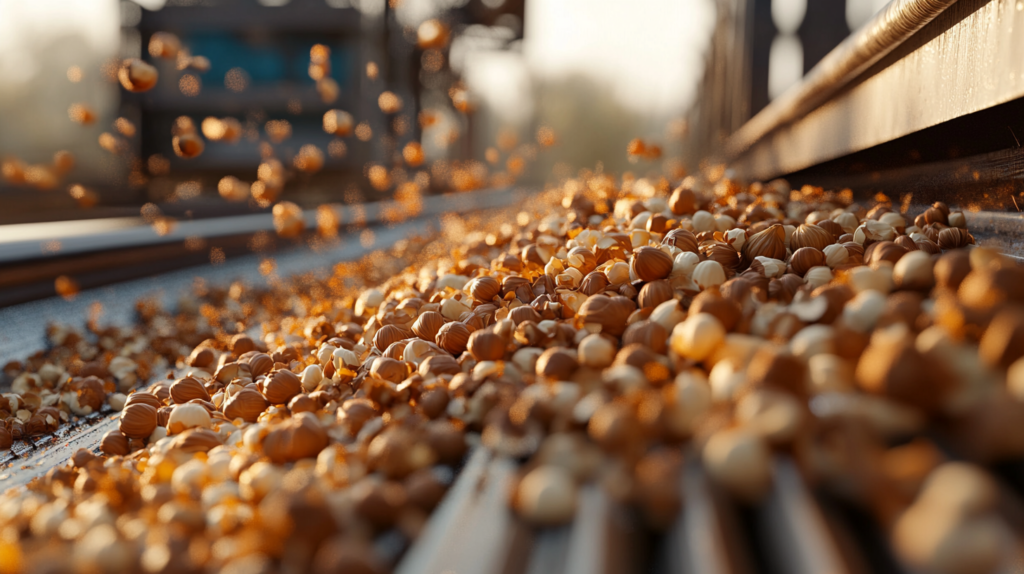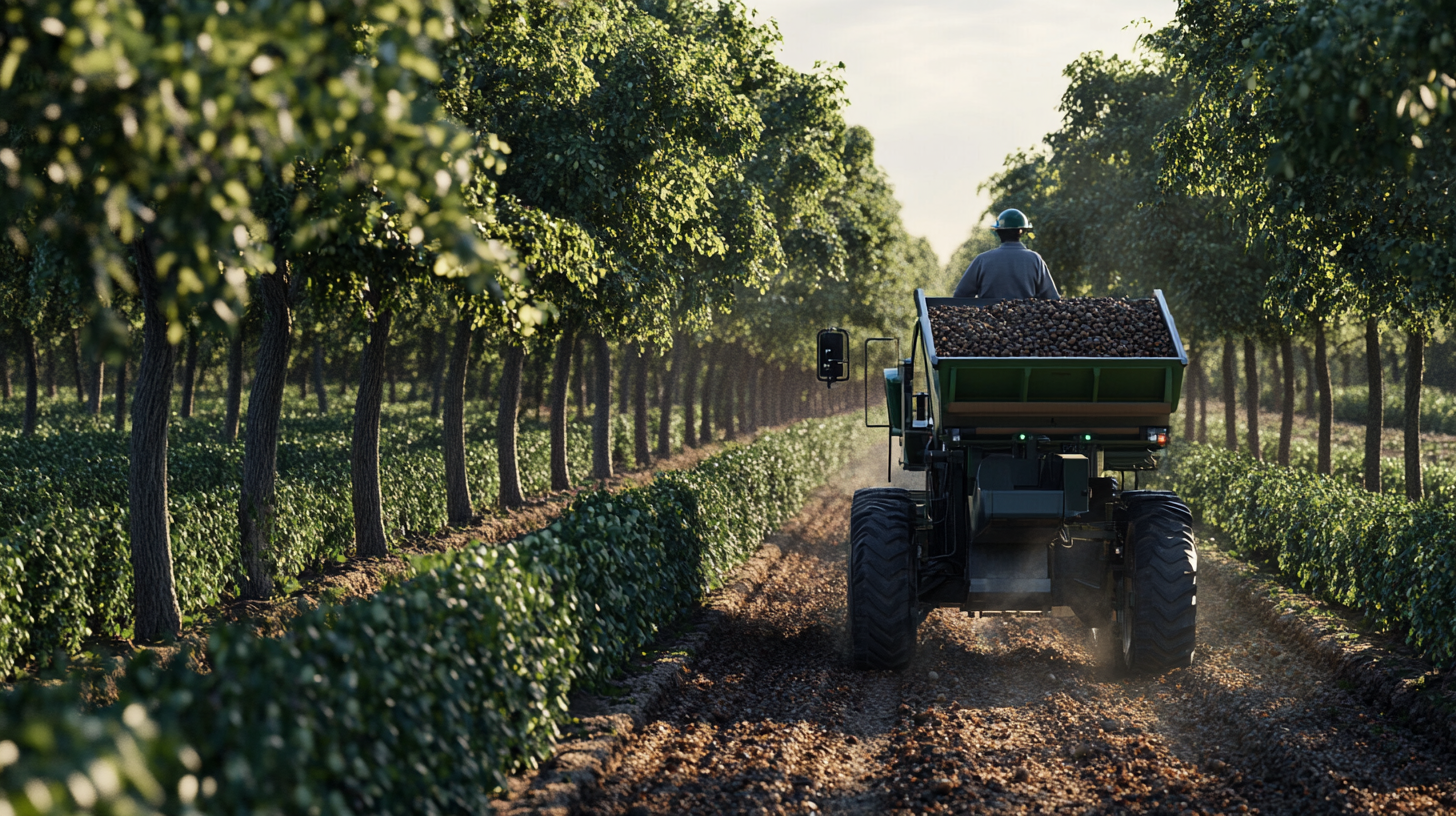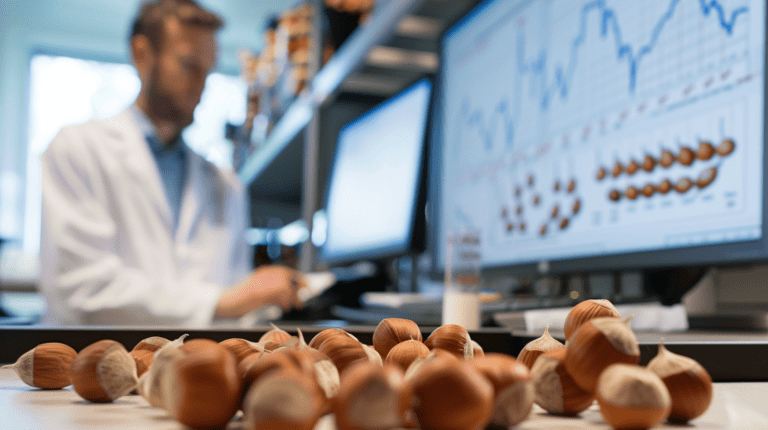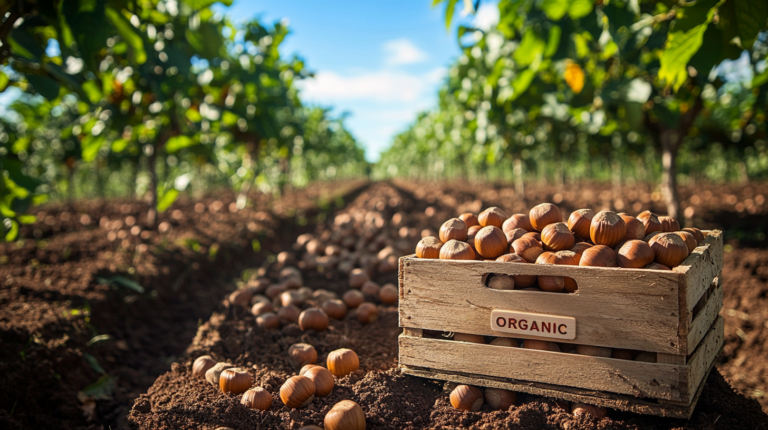Innovations in Hazelnut Harvesting and Their Market Impact
The hazelnut industry has undergone significant transformations in recent decades, driven by technological advancements and market demands. These innovations have not only revolutionized the harvesting process but have also had far-reaching effects on the global hazelnut market.
Evolution of Hazelnut Harvesting Techniques
In the past 20 years, the development of hazelnut cultivation, particularly in Italy, has been closely tied to the introduction of harvesting machines1. This shift has completely replaced manual harvesting methods, leading to remarkable improvements in efficiency and productivity.
– From Manual to Mechanical Harvesting
The transition from manual to mechanical harvesting has resulted in a substantial increase in harvesting rates. In the early stages of mechanization, harvesting rates were around 100 kg/h. However, with continuous improvements in harvester technology, modern machines can now achieve rates exceeding 1000 kg/h1. This tenfold increase in productivity has had a profound impact on the industry, allowing for more efficient and cost-effective hazelnut production.
– Types of Hazelnut Harvesters
Several types of hazelnut harvesting machines have been developed to suit different orchard conditions and production scales:
- Pulled Vacuum Harvesters: These machines are towed behind tractors and use suction to collect hazelnuts from the ground.
- Self-Propelled Aspirating Harvesters: These standalone machines combine mobility with powerful suction capabilities.
- Picking Harvesters with Trailer: These harvesters not only collect nuts but also have integrated storage capabilities.
- Side-Picker Harvesters: These machines are designed to collect nuts from the sides of rows, improving efficiency in certain orchard layouts1.
– Performance and Efficiency
The performance of these harvesters varies depending on several factors:
- Pulled machines typically cover 0.2-0.4 hectares per hour
- Self-propelled harvesters can manage 0.35-0.5 hectares per hour1
Factors influencing harvester performance include work conditions, row length, orchard production, and the organization of the harvesting operation.
Technological Advancements in Harvesting
Recent innovations in hazelnut harvesting have focused not only on improving technical and economic performance but also on enhancing operator safety, health, and overall working environment quality1.
– Ergonomic Improvements
Modern harvesters have been designed with ergonomic considerations in mind, addressing issues such as:
- Dust reduction
- Noise mitigation
- Improved operator posture
These improvements have made the harvesting process more comfortable and less physically demanding for workers, potentially leading to increased productivity and job satisfaction.
– Precision Agriculture Integration
Some of the latest hazelnut harvesters are being equipped with precision agriculture technologies, including:
- GPS guidance systems for more efficient field coverage
- Yield monitoring sensors to provide real-time data on harvest quantities
- Automated sorting systems to separate nuts from debris
These technologies not only improve harvesting efficiency but also provide valuable data for orchard management decisions.
Economic Impact of Harvesting Innovations
The advancements in hazelnut harvesting technology have had significant economic implications for producers and the market as a whole.
– Cost Reduction
Mechanical harvesting has led to a substantial reduction in labor costs, which traditionally accounted for a significant portion of hazelnut production expenses. In some production areas, manual harvesting could account for up to one-fifth of annual orchard management costs6. The shift to mechanical harvesting has dramatically reduced this financial burden on producers.
– Market Growth and Projections
The global hazelnut market has seen substantial growth, partly due to increased production efficiency. The market is estimated to reach a valuation of US$ 17.69 billion in 2023 and is projected to grow at a CAGR of 8.8% to reach US$ 41.12 billion by 20332. This growth is attributed to various factors, including improved harvesting techniques that have made hazelnut production more economically viable.
For more insights on current trends and future opportunities in the hazelnut industry, check out Trends and Opportunities in the Hazelnut Industry.
– Regional Economic Impact
The adoption of mechanical harvesting has had varying impacts across different hazelnut-producing regions:
- In Italy’s Monti Cimini area, which accounts for more than 5% of world hazelnut production, the close interaction between local farmers and harvester manufacturers has driven continuous technical improvements3.
- In Turkey, the world’s largest hazelnut producer, the adoption of mechanical harvesting has been slower but is gradually increasing, potentially reshaping the country’s dominant position in the global market.
Quality Control and Market Demands
Innovations in harvesting technology have also addressed the growing market demand for higher quality hazelnuts.

– Damage Reduction
Modern harvesters are designed to minimize damage to the nuts during the collection process. This is crucial for maintaining nut quality, as damaged nuts can quickly lead to infection and loss of entire batches4.
– Moisture Content Management
Recent technological developments, such as ENEA’s Terahertz radiation system, allow for quick identification of damaged hazelnuts and measurement of moisture content4. This technology enables producers to:
- Remove damaged nuts before industrial processing
- Monitor the growth cycle of hazelnuts until maturation
- Ensure longer preservation of harvested nuts
These capabilities are particularly valuable for the food and beverage industry, which is expected to reach US$ 8.2 billion over the forecast period, with a CAGR of 4.5%2.
Environmental and Sustainability Considerations
As the hazelnut industry evolves, there is an increasing focus on sustainable practices, including in harvesting methods.
– Energy Efficiency
Modern harvesters are being designed with improved fuel efficiency, reducing the environmental impact of the harvesting process. Some manufacturers are exploring electric or hybrid harvesting machines to further reduce emissions.
– Soil Conservation
Advanced harvesting techniques are being developed to minimize soil disturbance during the collection process. This helps maintain soil health and reduces erosion, contributing to the long-term sustainability of hazelnut orchards.
– Organic Production
The development of mechanical harvesting techniques suitable for organic hazelnut production is an area of ongoing innovation. This includes the use of specialized rakes and vacuum extractors that can operate effectively without the use of chemical inputs5.
Challenges and Future Directions
Despite the significant advancements in hazelnut harvesting, several challenges remain:
– Orchard Adaptation
Many existing hazelnut orchards were not designed with mechanical harvesting in mind. Adapting these orchards or developing new planting systems optimized for mechanical harvesting is an ongoing process.
– Small-Scale Producers
While large-scale producers have benefited greatly from harvesting innovations, small-scale farmers may struggle with the high initial investment costs of advanced harvesting equipment. Developing more affordable or scalable solutions for smaller operations remains a challenge.
– Climate Change Adaptation
As climate patterns shift, hazelnut harvesting technologies may need to adapt to changing growing conditions and harvest timing. This could involve the development of more flexible harvesting systems capable of operating under a wider range of conditions.
– Automation and Robotics
The future of hazelnut harvesting may lie in increased automation and the use of robotics. Research is ongoing into autonomous harvesting systems that could further reduce labor requirements and increase efficiency.
Conclusion
Innovations in hazelnut harvesting have transformed the industry, leading to significant increases in productivity, efficiency, and quality control. These advancements have contributed to the growth of the global hazelnut market and have reshaped the economic landscape for producers.
As the industry continues to evolve, future innovations are likely to focus on further improving sustainability, adapting to climate change, and increasing automation. The ongoing development of harvesting technologies will play a crucial role in meeting the growing global demand for hazelnuts while addressing the challenges of modern agriculture.
The impact of these innovations extends beyond the farm, influencing the entire hazelnut supply chain and contributing to the growth of related industries such as confectionery and cosmetics. As harvesting technologies continue to advance, they will undoubtedly play a pivotal role in shaping the future of the global hazelnut market.
Sources:
[1] https://www.ishs.org/ishs-article/686_48
[2] https://www.futuremarketinsights.com/reports/hazelnut-market
[3] https://www.ishs.org/ishs-article/556_66
[4] https://www.media.enea.it/en/press-releases-and-news/years-archive/year-2024/agriculture-enea-develops-technology-to-detect-healthy-hazelnuts-with-terahertz-radiation-and-ai.html
[5] https://feucht-obsttechnik.de/en/nut-processing/hazelnut/harvesting-hazelnuts/
[6] https://www.ncbi.nlm.nih.gov/pmc/articles/PMC9787295/
[7] https://www.turkiyetoday.com/turkiye/is-turkiyes-hazelnut-industry-facing-bankruptcy-challenges-opportunities-in-2024-42458/
[8] https://www.imarcgroup.com/hazelnut-market
[9] https://www.researchgate.net/publication/372045913_Hazelnut_Harvesting_Machines_Recent_Advances_and_New_Trends
[10] https://www.linkedin.com/pulse/hazelnut-harvester-market-impact-ai-automation-49brf/






